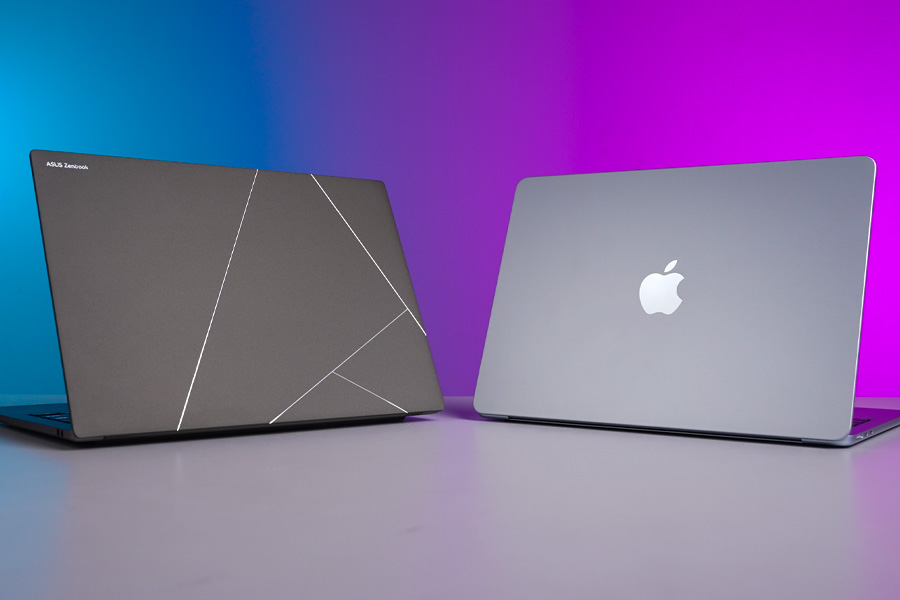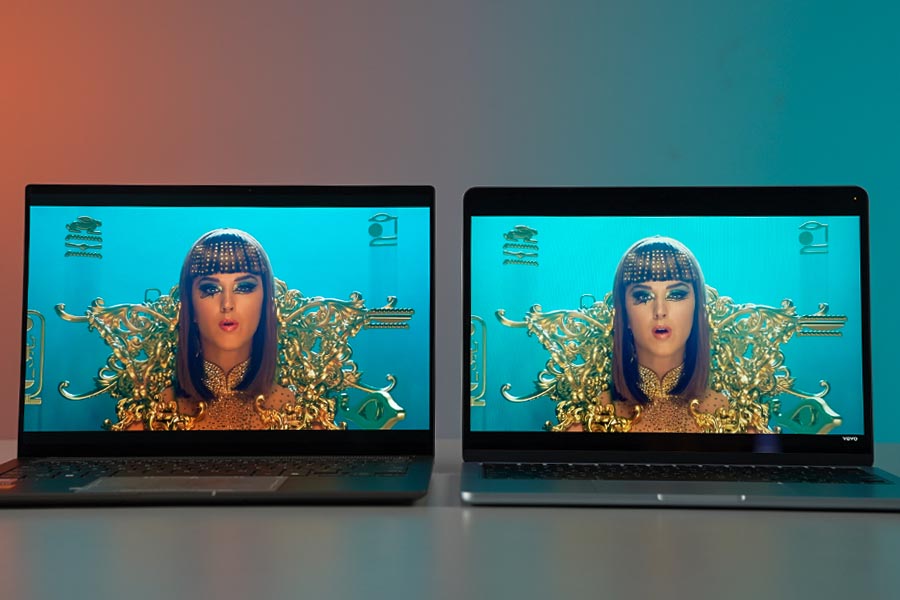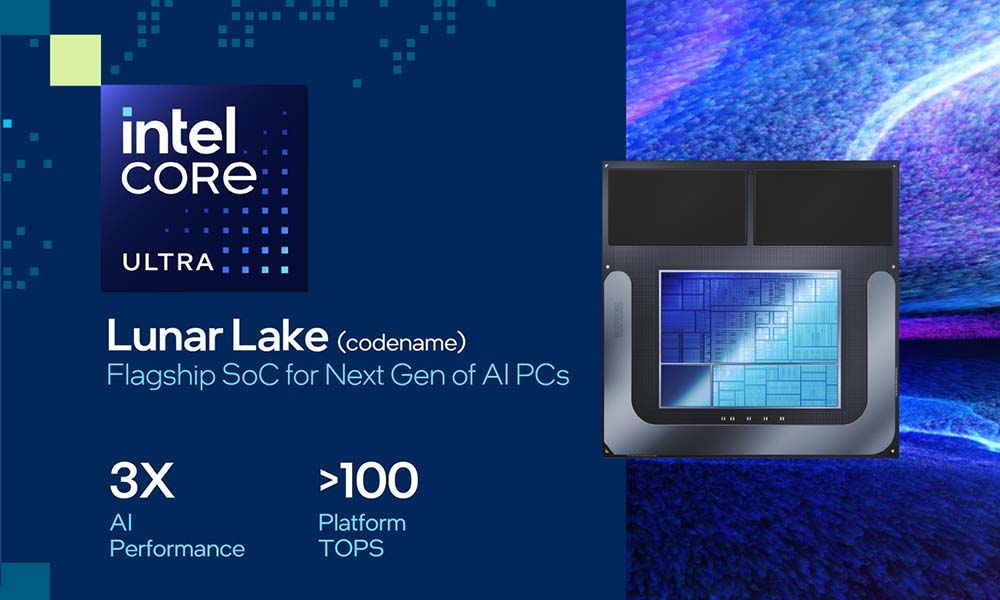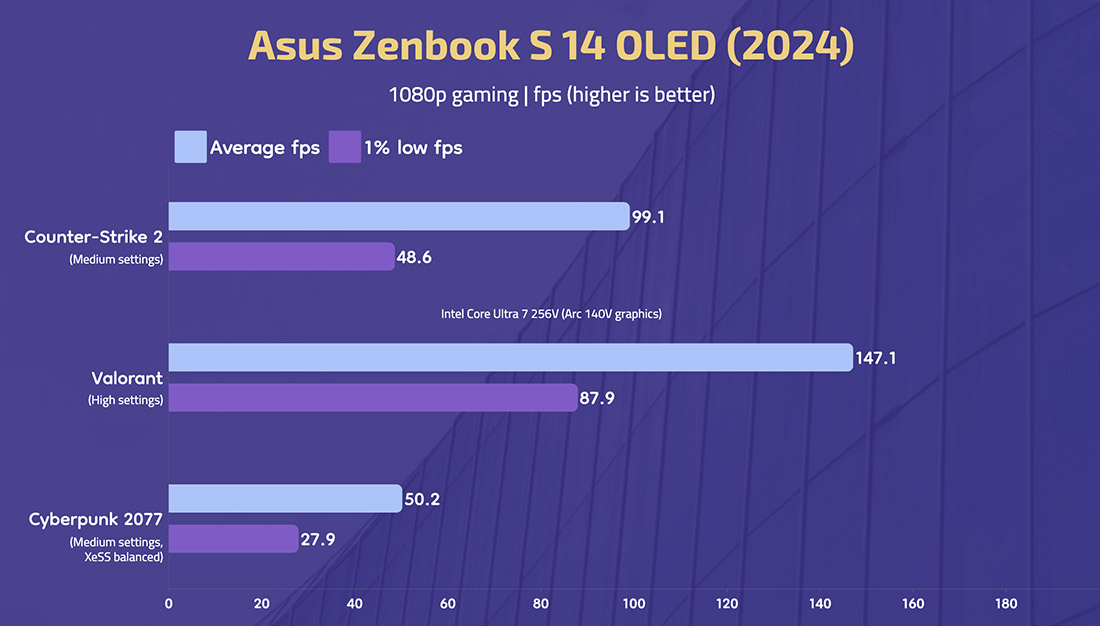Why Trust Gadgetbyte?
At Gadgetbyte, we invest substantial hours into rigorously testing each product or service we review, guaranteeing that you make informed purchases. Learn more about our testing process.
Review Overview
Value for money
10/10
Battery
10/10
Webcam
9/10
Audio
9/10
Performance
9/10
Trackpad
10/10
Keyboard
9/10
Display
9/10
Design and build
9/10
How do Windows laptop makers even compete against something like the M4 MacBook Air? This is just... such a superb laptop with an excellent value for money that it makes everything else look like a bad deal.
So ever since Apple launched the M1 MacBook Air (review) back in 2020, the craze for MacBooks has just… skyrocketed. That thing was such a perfect little laptop for $1,000 that it made every Windows laptop at a similar price look like such a bad deal.
Fast forward to 2025, Apple’s newest MacBook Air now ships with a much more powerful M4 chip, it now has 16 gigs of memory in the base model instead of just 8 gigs, and it still starts at $1,000. And yep… if you’re looking to buy a nice, reliable laptop without spending too much, the M4 MacBook Air is most likely your safest choice.
But you (probably) know how I am.
I don’t wanna recommend you guys something without actually testing it myself. Which is why I’ve been using it alongside a $1,000 Windows laptop to find out if the M4 MacBook Air really is as good as everyone says it is. And after a lo…t of research, I found the Asus Zenbook S 14 OLED to be the closest M4 Air competitor in the Windows world. It's quite a bit more expensive than the M4 Air in Nepal — retailing for NPR 232,900 —but bear with me here.
Apple M4 MacBook Air review: Specifications
- Dimensions, Weight: 11.97 x 8.46 x 0.44 inches (W x D x H), 1.24 kg
- Display: 13.6″ Liquid Retina IPS panel, 60Hz refresh rate, 100% DCI-P3 color gamut, 500 nits brightness
- Keyboard: Full-size backlit Magic Keyboard
- Security: Touch ID (fingerprint sensor)
- Processor: Apple M4 (3nm, N3E process)
- 10-core CPU, 8/10-core GPU, 16-core Neural Engine
- Memory: 16GB unified memory
- Storage: 256GB to 2TB SSD storage
- Audio: Front-firing four-speaker system (2 tweeters + 2 woofers)
- Battery: 53.8 Watt-hour Li-Po battery with up to 70W charging
- Webcam: 12MP Center Stage camera (Desk View support)
- I/O Ports: 2x USB-C (Thunderbolt 4), 1x MagSafe 3, 1x 3.5mm headphone jack
- Price in Nepal: NPR 174,999 (16GB memory, 256GB SSD)
- Check the full specifications of Apple M4 MacBook Air here
Apple M4 MacBook Air review:
Oh, and I’ll be comparing these two across a dozen different categories by the way to help you clearly understand which one’s better.| Design | 1 | Keyboard | 1 | Software | 2 |
| I/O | 1 | Trackpad | 1 | Gaming | 1 |
| Display | 2 | Webcam | 1 | Battery | 2 |
| Speakers | 1 | Performance | 2 | Value for money | 2 |
Design and build
- 11.97 x 8.46 x 0.44 inches (W x D x H)
- 1.24 kg, All-metal build
So with all that sorted out… let me start with their design. And it’s gonna be a tie right away because both M4 Air and Zenbook S 14 have such an interesting approach here. The MacBook Air brings that classic all-metal design, while the ceramic + aluminum construction that the Zenbook uses feels just as premium and tough to me.

I like how they’re both so easy to carry around as well — and despite being so lightweight — I can comfortably lift them open with just one hand. Well… technically Asus did manage to make the Zenbook a bit lighter than the MacBook Air but you know what? These two feel practically the same whenever I have them in my backpack.
| M4 MacBook Air | 1 | Zenbook S 14 OLED | 1 |
The port selection on MacBook Airs has always been somewhat of a sore spot for me though. All you get is a MagSafe connector for charging, a 3.5mm headphone jack, and a couple of Thunderbolt 4 / USB-C ports. So I almost always feel the need to travel with a USB hub with the MacBook Air in case I need to connect a pen drive. Or an external monitor through HDMI.
Whereas the Zenbook S 14 pretty much brings all the ports I could ask for. It also has a headphone jack and a couple of high-speed Thunderbolt 4 connections — but on top of that — there’s a full-sized HDMI 2.1 and a Type-A port as well with up to 10 Gbps data speeds.
So yeah… this round definitely goes to Asus.
| M4 MacBook Air | 1.5 | Zenbook S 14 OLED | 2 |
Display
- 13.6" Liquid Retina IPS display
- 60Hz refresh rate, 100% DCI-P3 color gamut
- 500 nits brightness
And so does the next one ‘cause I wanna talk about their display next.
Now the M4 Air’s display is perfectly good for everything too. It gets quite bright, it looks plenty sharp, and it’s also super color-accurate with 100% sRGB colors. But put it next to the Zenbook’s gorgeous OLED panel and you’ll see exactly why this guy deserves the win. I mean… the perfect blacks and the perfect contrast ratio of an OLED display is something an IPS panel simply can’t compete with.

And unlike the MacBook Air, you’re also looking at a 120Hz display here. So things like scrolling through websites or gaming are gonna feel a lot smoother on the Zenbook S 14 too. Compared to the M4 Air’s 60Hz refresh rate. Asus obviously didn’t compromise in terms of brightness numbers or color accuracy either so… you get what I mean.
| M4 MacBook Air | 2.5 | Zenbook S 14 OLED | 4 |
Speakers
- Four-speaker system (2 tweeters + 2 woofers)
- Support for Spatial Audio
I was quite surprised with how full and detailed its speakers sound as well.
They both have a great set of speakers while the Zenbook S 14 actually has noticeably better bass response than M4 Air. I remember saying how MacBooks have the best speaker on a laptop a while back but it seems some Windows manufacturers have managed to catch up to Apple. Nice!
| M4 MacBook Air | 3.5 | Zenbook S 14 OLED | 5 |
Keyboard
- Full-size Magic Keyboard (backlit)
- 1mm key travel
Let’s talk about the keyboard now.
And I gotta say, both the MacBook Air and the Zenbook S 14 have awesome keyboards. They’re both backlit, low-travel keyboards with around 1mm of travel distance, so it all comes down to your personal preference before deciding on one of ‘em.
The one on the MacBook feels just a tad bit stiffer and noisier for my taste versus the Zenbook — but like I just said — it’s an entirely subjective thing.
| M4 MacBook Air | 4.5 | Zenbook S 14 OLED | 6 |
Trackpad
- Force Touch trackpad
I can’t really decide on one clear winner in terms of the trackpad either.
I’m probably supposed to say how the MacBook Air has a “technically superior” haptic trackpad while Asus has used a traditional mechanical one. Then again, I seriously doubt anyone will have a problem with the equally large and smooth touchpad on the Zenbook. And it even has a couple of fun and useful gestures to control volume, brightness, and stuff!
| M4 MacBook Air | 5.5 | Zenbook S 14 OLED | 7 |
Webcam
- 12MP Center Stage camera
- Three-mic array with directional beamforming
Alright.
So taking a quick peek at the scoresheet, I know the MacBook Air doesn’t seem all that impressive so far but trust me… we still have a long way to go.
And when it comes to the webcam, the M4 Air clearly has a better camera than the Zenbook. This is actually among the few hardware upgrades in this year’s MacBook Air ‘cause Apple has borrowed the same 12MP ultrawide camera from its “Pro” MacBooks here. The details, exposure, and overall video quality itself are better on the M4 Air, while that upgraded camera also means two things:
-
It now supports “Center Stage” to keep you in the frame as you move around.
The Zenbook S 14 has a similar feature called “Automatic Framing”, although I found that it doesn’t quite work as well as it should.
-
Whereas Apple has made the most of that wider camera with something called “Desk View”. Which basically gives me an overhead view of my desk in case I need to show and tell something during video calls. I’ll admit that the image looks pretty distorted, but it does come in handy every now and then.
| M4 MacBook Air | 6.5 | Zenbook S 14 OLED | 7.5 |
Performance
- Apple M4 chip (3nm)
- 10-core CPU, 8/10-core GPU
- Up to 32GB unified memory, Up to 2TB SSD
Let’s… talk about performance now.
So the M4 chip on the MacBook Air now has a 10-core CPU (with 4 performance and 6 efficiency cores) and an 8-core GPU if you get the base variant. With 16GB of unified memory and 256GB storage.
On the other hand, the Zenbook S 14 has an Intel Core Ultra 7 256V “Lunar Lake” chip. I know that name sucks but Lunar Lake is easily Intel’s most ambitious lineup of mobile processors yet. And in a lot of ways, Intel has really tried to emulate Apple’s success by focusing on efficiency instead of just raw horsepower like always.

It’s built on TSMC’s 3nm process (like the M4 chip), Intel even got rid of hyperthreading for better efficiency, while this thing also has an integrated memory like Apple silicons. The storage is still upgradable here — unlike on the MacBooks — but yeah.
I’ll talk about whether or not Intel’s big bet on efficiency to improve battery life actually pays off in real-life usage in just a moment, but what you need to know right now is that M4 is simply way more powerful than this Intel chip. At literally every single thing.
It's... not even a competition.
Be it in something like Cinebench 2024 which tests the chip’s CPU performance under full load or in Geekbench 6 that’s more like a general-purpose benchmark to test everyday work. And it’s not like Apple is ahead by a small margin either ‘cause I’m seeing nearly 40% better single-core scores and 20 – 40% better multi-core results.
The M4 outclasses Intel’s 256V in GPU-based tests as well… and even in some productivity-based ones like Photoshop and Premiere Pro.
I also tried editing a simple 4K video on both of them. And although they managed to render the project at a surprisingly similar time, the actual editing experience was mu…ch smoother on the MacBook Air. Including things like scrubbing through the timeline in real-time and also when I was using multi-frame rendering on After Effects.
The MacBook Air is better-suited for AI tasks too… as you can see from this Geekbench AI test. And when I tried locally running Deepseek’s “R1” model with 7 billion parameters on these machines, the M4 Air had lower latency and it was much faster at generating tokens for the same prompt. Just… brilliant!
And then there are two important things about the MacBook’s performance that makes it all the more impressive compared to this Windows laptop:
- Number 1, it is passively cooled. Which means there’s absolutely no fan noise here.
- And number 2, the M4 Air retains its peak performance even on battery power. Unlike the Zenbook S 14 which loses a lot of its CPU performance when it's not plugged in.
| M4 MacBook Air | 8.5 | Zenbook S 14 OLED | 8.5 |
Don’t get me wrong, the Zenbook is perfectly powerful enough on battery power for everyday work like checking email, browsing the web, editing documents, and stuff like that. And I must say that its fan noise is also whisper quiet in those situations.
The age-old problem with Windows machines
But anytime I do something a little more computationally demanding… like photo/video editing or running AI models locally, I need to either worry about sacrificing performance or worse fan noise and worse battery life on this guy.
It’s like I’m damned if I do and damned if I don’t!
The Zenbook S 14’s only saving grace — as far as the performance is concerned — is that at least you can game on it. I doubt anyone’s buying a slim, lightweight laptop exclusively for gaming but hey… it’s possible here. And on my tests, I was easily getting around 100+ fps on CS2 and Valorant at medium to high settings at 1080p. Or around 50 fps on Cyberpunk 2077 with some upscaling magic.

I know gaming on a Mac has come a long way in the past couple of years — with more and more titles launching natively for Apple’s Arm-based systems — but Windows still has a massive head start in terms of gaming.
| M4 MacBook Air | 9 | Zenbook S 14 OLED | 9.5 |
Software
- macOS Sequoia
As for the software experience itself, I’m gonna have to side with macOS as well.
It’s… so well designed, the animations are fantastic, and it just feels so reliable to me, you know? My one major complaint I used to have with macOS was that arranging multiple app windows always used to be a pain… but Apple has fixed that with macOS Sequoia. You also get a few “Apple Intelligence” features this time, and to me, those feel better-designed and easier too versus all the AI features on Windows 11.
| M4 MacBook Air | 11 | Zenbook S 14 OLED | 10.5 |
Battery
- 53.8 Wh Li-Po battery
- Up to 70W fast charging support
Finally, I also found the battery life to be better on the MacBook Air.
It actually has a smaller 53.8 Wh battery compared to 72 Wh battery on the Zenbook S 14 but remember how I tested their performance on battery power? Yeah… I was also closely monitoring the battery level after every single test.

And by the end, the M4 Air and the Zenbook lost 30% and 36% charge, respectively. Even in my regular, everyday use, the MacBook Air would last longer by 10 – 15% every single day. So… even though Intel used every single trick up its sleeve to make Lunar Lake as power-efficient as possible, it seems that it’s still no match for Apple’s M4 chip.
| M4 MacBook Air | 13 | Zenbook S 14 OLED | 11.5 |
At least the Zenbook charges slightly faster so… that’s something I guess.
With the included 65W power brick taking the laptop from 1 – 100% in two hours, while the 30W adapter that Apple ships inside the box needs half an hour more to get the job done. You can speed up the charging time on the MacBook with a 35/70W brick — but of course — that’s gonna cost extra.
Which one's the better value for money?
And considering everything, I’d say the M4 Air is a better value for money as well.
That level of performance, battery life, dependability, and everything else I get for just $1,000 here is simply remarkable. Not just that but MacBooks have a significantly better resale value than Windows laptops too. So if I want to sell it in the future for some reason, the M4 Air is not gonna depreciate by a lot like pretty much every other Windows machine. I can guarantee you that!
| M4 MacBook Air | 15 | Zenbook S 14 OLED | 12.5 |
Apple M4 MacBook Air review: Conclusion
Okay, so we’ve come to the end of this review.
And taking a final look at the scoresheet, we can see that the M4 MacBook Air takes a comfortable victory in this battle. The Zenbook S 14 does snatch a win at a couple of things like display, port selection, and gaming but besides that… the MacBook Air has a clean sweep at everything else. Especially when it comes to important stuff like performance, software experience, battery life, and overall value for money.

So yeah. If you're looking to buy a premium, everyday laptop without spending too much, get the M4 MacBook Air. Don’t look at any Windows ultrabook unless macOS itself is a dealbreaker to you.
- Our video review of Apple M4 MacBook Air is coming up pretty soon
Apple M4 MacBook Air review: Pros and Cons
| • Literally everything else | • The port selection could’ve been better |
| • Just 256GB of base storage | |
| • Unfortunately, memory and storage upgrades still cost an arm and a leg |
How did we do with this article?
No Active Polls
There are currently no polls available. Check back later for new polls to participate in!
Conversation
We’d love to hear your thoughts! Let's keep it respectful and on-topic. Any inappropriate remarks may be removed. Happy commenting! Privacy Policy
Be the first to share your thoughts—start the conversation!
Latest Articles
Best Tech Deals
No deals available.
Check back later for exciting deals!
More Articles







